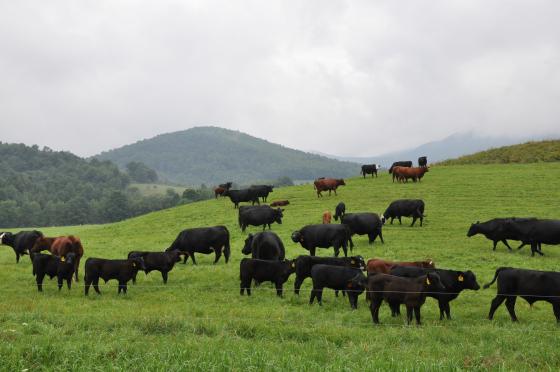Posted March 17, 2022 at 10:36am by Anonymous (not verified)
Maple Wind Farm

At Maple Wind Farm in Huntington, the beef cattle “harvest their own feed,” as farmer Bruce Hennessey likes to say. They’re grass-fed cattle, meaning that for six and sometimes seven months of the year they eat grass on pasture, using their own energy to walk around and fatten themselves.
Bruce, who runs Maple Wind Farm with his wife, Beth Whiting, says putting his 100% grass-fed cows on pasture costs “a tiny fraction” of what it would if he harvested or bought his own hay during the grazing season. (He does have to make hay to feed his cattle through the depths of winter.)
To be sure, other costs are associated with grass farming that can cancel out these input savings. For instance, it takes twice as long to finish a beef steer on grass as on grain, so Bruce and Beth must keep their beeves through two winters.
And the farm does have to purchase supplemental grain for its pastured pigs and poultry, as these animals require some grain in their diet. Right now it’s difficult to find Vermont-sourced grain, but Bruce wonders if Vermont dairy farms that are forced to go out of business could switch to growing corn and soy for the state’s livestock and poultry farmers.
“One thing I hope the Farm to Plate process can encourage is the development of a local grain supply for livestock,” Bruce says. “Maybe then we can be local and organic, and have truly local chickens and pigs that aren’t fed on Midwestern grain.”
Written by Caroline Abels.
See also, Pastured Poultry in Aisle 9.
